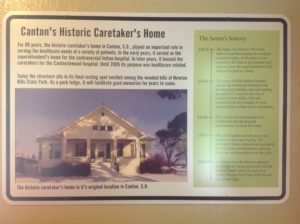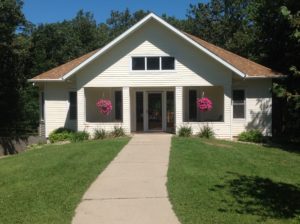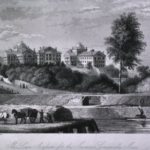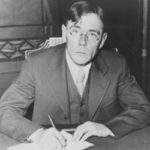Many people in today’s workforce complain that it’s difficult to get away from the job–they’re available to their employers through phones and email almost constantly. Superintendents and other staff at insane asylums were also tied to the workplace, actually living on the premises and usually right in the same building as patients. Many superintendents felt that this was a good idea, since it gave staff the opportunity to know the patients better, and of course, made them immediately available if a situation arose that needed attention.
Though room and board were nice perks for employees, most would doubtlessly have preferred living off the premises or at least away from patients. The superintendents at the Canton Asylum for Insane Indians were no different. For one thing, staff quarters were crowded. Canton Asylum’s first superintendent, Oscar Gifford, had a home in town and simply gave his assistant superintendent, Dr. Turner, the space they would have otherwise shared. The asylum’s second superintendent, Dr. Harry Hummer, came from out of state and needed to live in the available quarters. He shared these with Dr. Turner and with his replacement, Dr. Hardin, until Hardin left the Indian Service.
Dr. Hummer always wanted his own, separate home, however, and finally gained approval for a residential cottage. Hummer received two bids for the project and recommended accepting the bid from Martin Granos: “He agrees to give us three coats of plaster, a larger basement [than the other bidder], a larger cistern, beamed ceiling in the living-room, stained shingles, a $58.00 range, a $31.00 ice-box built in, oak finish throughout the interior, fireproofed fireplace and three kinds of water in the bath-room.”
Decades after the asylum closed, Dr. Hummer’s cottage was removed from the premises and taken to Newton Hills State Park in South Dakota, where it is available for rent to vacationers and other members of the public. The reconstructed cottage differs just slightly from the original.







